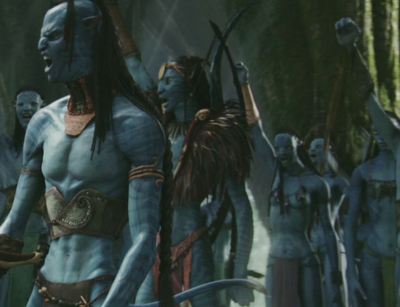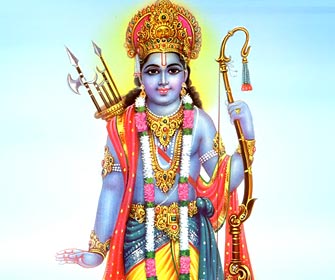As I was having trouble with writing the introduction, I've decided to follow the advice given to me by my parents and Tracy, the studies adviser, and attempted to take a crack at writing the main body of the essay first so that I'll know what to write about in the conclusion and the introduction.
__________________________________________________________________________________
The cinematography of a film often attracts more attention than its design, with the director and producer recieving more of the glory and money than the production designer. This is partly due to the fact that the basic tools of cinematography—the camera, light and shadow—a are the key raw materials of cinema. The role played by design is less tangible. To be a narrative designer, or 'an architect' so to speak, is to be a purveyor of wonderment. The production designer must almost have the heart of a child, one that is curious and excited by new discoveries, as well as the designated adult who is an informed and impassionated advocate that nurtures, advises and guides a uniquely collaberative process. They have directed the production of many fantasical sets as written and listed by Peter Ettedgui: “Who can forget Ken Adam's War-Room in Dr Strangelove or his Fort Knox gold vault in Goldfinger?” (Ettedgui, Production Design & Art Direction Screencraft, 1998. Page 10). He then goes on to mention the “haunting vision of Gotham City by Anton Furst in Batman, or Richard Sylbert's richly atmospheric evocation of 1930s' Los Angeles in Chinatown.” (Ettedgui, Production Design & Art Direction Screencraft, 1998. Page 10).
Production designers are responsible for the visual concept of a film, television or theatre production. They realise a design style for sets, locations, graphics, props, lighting, camera angles and costumes, while working closely with the director and producer. Once the concept is decided, designers usually appoint and manage an art department, which includes a design and construction team. They often form a strong partnership with a particular director with whom they may work on many productions. Designers tend to specialise in either film, television or theatre, although there may be some overlap. In the theatre, production designers are also called stage or set designers.
Most production designers work as freelancers and so an important part of their work is marketing their skills and experience, making contacts and briefing agents. First tasks usually include clarifying the brief and agreeing a suitable fee and timescale, which is sometimes done by an agent. After this, work activities might then include reading scripts to identify factors indicating a particular visual style, considering the production brief—which may be written or oral—meeting the producer and director to discuss concepts and production requirements. Overall, the production designers' responsibility is to create a world to be brought to life through film. “-a film's design and art direction are its very core—the powerful centre from which movie magic is created.” (Whitlock, Designs on Film—A century of hollywood art direction, 2010, Page 2)
One of Hollywood's most renowned production designers, Rick Carter, among other things, helped create the world of James Cameron's AVATAR's Pandora and the art direction the film and its characters whose lead art director is Niel Huxley.
Huxley uses a plethora of the surreal, the otherworldly and the familiar in his work on Pandora, much of which he says is inspired by the work of other artists. “I’m inspired by artists like Peter Saville, Bill Henson, Auguste Rodin, Ashley Wood, Jan Tschichold, and Saul Bass.” (Huxley, 2010. Interview) This is very much apparent in Huxley's art style in the film, particularly how he is influenced by Auguste Rodin and Ashley Wood. We see that with the Na'vi, they have sculpted, almost perfect bodies reminiscent of Rodin's sculptures of idealized figures. We also see that a lot of ideas may have been taken from Wood's various desaturated paintings of humanoid machines to influence the designs of the human environment and cold, industrialist theme in the film.


Fig 1 Fig 2
Rick Carter has done significant work designing such well-known films as Forest Gump, Jurassic Park and Back to the Future. Rick Carter, when working on AVATAR, implemented many themes into the movie, some subtle and some blatantly obvious. It is almost as if Carter, with the help of the director James Cameron, sought to create a sort of poetry of what it means to be human throughout the film, constantly influencing us in different ways as an audience.
AVATAR is centered around the themes of imperialism, racism, militarism, patriotism, corporate greed, property rights, spirituality and religion. There has been debate as to whether or not the film's treatment of human aggression against the Na'vi is a message to support indigenous people today or if it simply a retelling of the racist myth of the noble savage. The anti-American message also seems to be clear with the majority of the Military figures in the film being of American background and the fact that the private military depicted in the film uses ex-marines to attack the native Na'vi people.
The similarities in the visual between the destruction of the World Trade Centre and the fall of Home Tree are a haunting message to the audience, telling them in a way that the militant contractor figures in the film are reminiscent of terrorists while the audience, more specifically the American audience, identifies more with the Na'vi, which could be a subtle message from Cameron asking us to empithize more with the position of Muslims under military occupation today.
The 'civilised humans' turn out as primitive, jaded and increasingly greedy, cynical, and brutal—traits only amplified by their machinery—while the 'monkey aliens' emerge as noble, kind, wise, sensitive and humane. The audience, along with the Avatar hero, are then faced with an uncomfortable yet irresistible choice between the two races and the two world views. It is inevitable that the audience, like the film's hero, Jake, would find that the Na'vi's culture was really the more civilized of the two, exemplifying the qualities of kindness, gratitude, regard for the elder, self-sacrifice, respect for all life and ultimately humble dependence on a higher intelligence behind nature. Avatar creates a two-edged cultural imperialism, an offensive cultural stereotype that white people are cold, rationalist and technocratic while colonial victims are spiritual and athletic and that illiteracy is the path to grace. The film contrasts a mix of New Age environmentalism and the myth of the Noble Savage with the corruption of the civilized white man, but also gives a somewhat racist undertone because, from what it seems, “This is a classic scenario you've seen in non-scifi epics from Dances With Wolves to The Last Samurai, where a white guy manages to get himself accepted into a closed society of people of color and eventually becomes its most awesome member .” (Newitz, 2009. io9.com)
This is very reminiscent of District 9 in which the main character, in a matter of speaking, is plunged into the shoes of the aliens against his will so he can see the opression from their side, then becomes their hero as he enables them to escape the planet. This and Avatar deal with the strong subject of white guilt, our main white characters realizing that they're taking part in a system that is either inadvertantently or advertently destroying aliens—representetive of people of colour, different cultures, their population and their environment. Then they go against the 'system' to fight against their own kind, but in the end they go boyond just being a member of the opposing force and become their leader. This is what the white guilt fantasy essentially is. “Think of it this way.Avatar is a fantasy about ceasing to be white, giving up the old human meatsack to join the blue people, but never losing white privilege.” (Newitz, 2009. io9.com)
Religion influenced Cameron's film in that Hinduism was a source of inspiration to him and those religious influences make their appearences, particularly in the landscapes of Pandora and the implications around it and the different sources it draws from, from myth as well as religion. Parts of the film's plot resemble reincarnation, ecological conciousness and the incarnations of deities on Earth, much of which seems to have been inspired by Hinduism. “AVATAR refers to the bodily manifestation of a higher being (deva).The Sanskrit word literally means "descent" and usually implies a deliberate descent into lower realms of existence for special purposes." (Agencies , 2009). The fact that, in Hindu culture, one of these deities, Vishnu's avatar's skin was a shade of indigo, closely resembling blue in other depictions of the avatar's image.


Fig 3 Fig 4
Posing the question of faith "should creation be goverened by a higher figure or figures or through ecology and mutual interdependence?", Avatar draws on the concepts of Creationism and Evolution with the Na'vi. Their deity, Eywa, is a God-like figure and the embodiment of life. Though from what we see in the film this deity isn't like the traditional Goddess we know. Her influence little beyond keeping balance in the world of Pandora. We also see the concept of Evolution being played on by the fact that everything seems to coexist in harmony with one-another just like most life on Earth--flowers and bees, birds and the teeth of a crocodile for example. Comparable to the garden of Eden from the Book of Genesis, Pandora is a world of beauty, but also filled with many temptations and dangers. Pandora tempts us in with its wonder, but endangers us with its many vicious and otherworldly creatures, much like the apple Eve eats. The Tree of Souls can be compaired to Yggdrasil from a Norse story whose destruction signifies the collapse of the universe. The film references heaven and hell and bases those references around the Na'vi people and the militant humans. The main character, Jake Sulley, describes Earth in a way that we could see as a lifeless hell.
"See the world we come from--there's no green there. They killed their mother and they're going to do the same here."
The use of words are a message to the audience about our own course in the world and how we are affecting it. The Earth in Pandora is be a 'what if' scenario if things came to the worst. Pandora, on the other hand, is visually described to us through alien and surreal landscapes, but also figuratively in that Jake Sulley is a disabled marine from Earth, but after arriving to the heavenly Pandora, he is 'reincarnated' into the body of a beautiful, athletic being--his Na'vi avatar. We are all disabled in one way or another; either broken, earthbound, inadiquate or old. Pandora is a heaven where one can be resurrected and be connected instead of disconnected as what seems to be the issue on Earth.
BIBLIOGRAPHY
(Accessed 20th November)
http://www.mid-day.com/entertainment/2009/aug/270809-Hollywood-James-Cameron-Avatar-Sam-Worthington-Aliens-Twentieth-Century-Fox.htm
(Accessed 20th November)
(Accessed 20th November)
BOOKS
“Production Design & Art Direction Screencraft”: Peter Eddedgui. Pub: RotoVision USA 1999. ISBN 2-88046-364-5
“Designs on Film: A Century of Hollywood Art Direction”: Cathy Whitlock. Pub: HarperCollins 2010. ISBN 978-0-06-088122-1
IMAGES
Fig 1
Fig 2
Fig 3
Fig 4

Hey Tom - lots to enjoy and admire here in terms of content - but, boring though it is, you're use of the Harvard Method in regard to your citations still isn't quite right; for example you give all this info in your citation:
ReplyDelete(Ettedgui, Production Design & Art Direction Screencraft, 1998. Page 10)
When, in fact, you just need (Ettedgui, 1998: 10) - the rest of it goes in the bibliography.
Ah, well that's simple to fix. I'll do that! Many thanks!
ReplyDelete